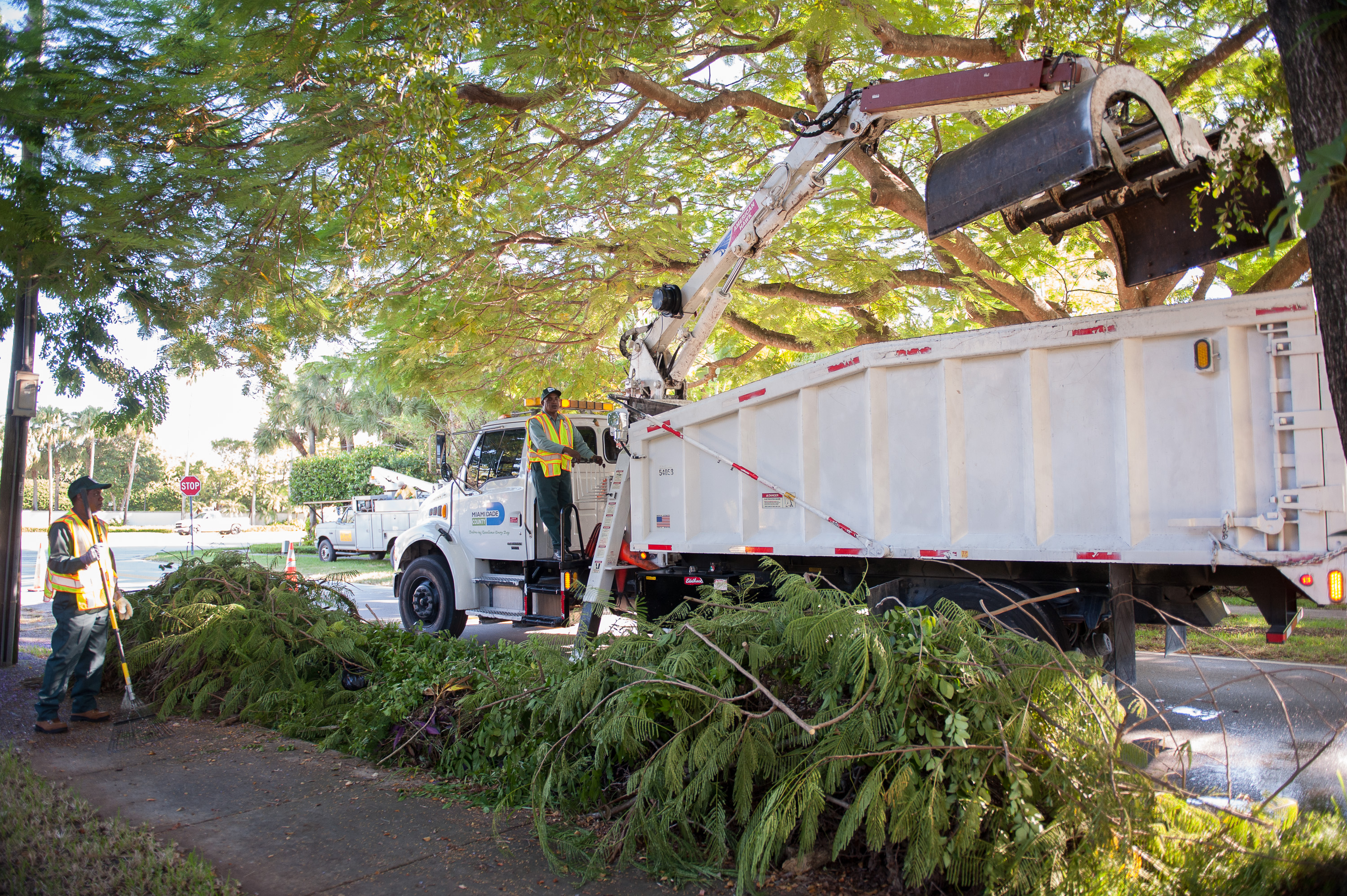Approach 6: Convert Waste to Energy
Miami-Dade's Department of Solid Waste Management (DSWM) and Water and Sewer Department (WASD) are the largest providers of waste and water and wastewater services in the county. The services they provide are essential for community, environmental, and economic sustainability. For decades, both have burned waste to produce energy. By investing in new, more efficient facilities the County can create more energy, avoid harmful methane emissions, and avoid sending waste to the landfill.
Metrics:
- Energy produced from waste kWh/year
- Energy produced from wastewater, kWh/year
- Waste sent to landfills, tons/year
- Fuel used in WASD and DSWM fleet operations, gallons
Waste rotting in landfills and wastewater produce methane, a greenhouse gas that heats the atmosphere 40 times more than carbon dioxide. Reducing methane emissions is critical to stop climate change, and one way to do that in Miami-Dade County is by converting waste and biogas into electricity.
Miami-Dade County’s Department of Solid Waste Management (DSWM) Resources Recovery Facility (RRF) was built in 1982. It burns up to 4,000 tons per day (tpd) of municipal solid waste, producing up to 77 megawatts of electricity. Approximately 22,000 tons of ferrous (steel) metal and 2,000 tons of non-ferrous (tin, copper) metal are recovered and recycled every year. Through a collaboration with the University of Florida, DSWM has determined it is feasible to use bottom ash produced at RFF that is currently landfilled in cement production.
The Water and Sewer Department (WASD) and DSWM currently capture methane from wastewater treatment plants and landfills. Major upgrades to the systems at the Central and South wastewater treatment plants, and new wells at the North Dade and South Dade Landfills will improve collection of methane or biogas. This gas is burned to produce electricity that runs wastewater facilities. WASD plans to reduce its energy costs by increasing the amount of energy produced from captured methane from 3.2 MW to 9.6 MW at 7,500 hours/year by 2030.
WASD currently collects Fats, Oils, and Greases (FOGs) from restaurants and food producers across the county and creates biogas in a digester that is burned to generate power. WASD will explore including food waste in the FOGs digester, cutting landfill waste and creating more biogas.
WASD and DSWM both have large diesel and gasoline fleets with regular routes. The County will use new technology to optimize routes for waste collection and water system monitoring and maintenance, reducing fuel consumption and pollution in the community. Both departments will also work to convert their fleets to electric power. DSWM will start with tractor trailers and move on to electric garbage trucks. Using electricity from the Resources Recovery Facility, electric garbage vehicles could ultimately be fueled by the very garbage they collect.
Contact Us

Environmental Resources Management
Loren Parra
Overtown Transit Village North
701 NW 1st Court,
Miami, FL 33136
305-372-6789
